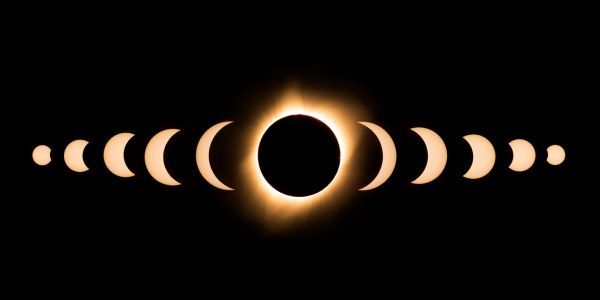

For those of you interested in space and science, we have some very exciting news for you...
On April 8, 2024, a total solar eclipse will cross North America, passing over Mexico, United States, and Canada! If you're a keen follower of space news and science, then this could be a source of huge excitement for you; we also know how many of you are raising budding astronauts so this is a fantastic way to engage them in a real life sci-fi scenario!
What is a total eclipse?
A total solar eclipse happens when the moon passes between Earth and the sun, completely blocking the light from the sun. Those within the path of 'totality' will experience temporary darkness as the moon completely blocks the sun for mere minutes; it's spectacular to witness and a very rare event.
Where and when can I see the total eclipse?
April 8, 2024 is the date to put in your calendar. You'll be able to witness this phenomenon at various times across North America; it will will begin in Texas at 1:27 pm CDT and will end in Maine at 3:35 pm EDT on April 8, 2024. You may need to correspond these times with your own local timezone to get an idea of when it will be your turn to experience the wonder of the total eclipse. NASA has shared the path of the eclipse;
"The path of the eclipse continues from Mexico, entering the United States in Texas, and traveling through Oklahoma, Arkansas, Missouri, Illinois, Kentucky, Indiana, Ohio, Pennsylvania, New York, Vermont, New Hampshire, and Maine. The eclipse will enter Canada in Southern Ontario, and continue through Quebec, New Brunswick, Prince Edward Island, and Nova Scotia. The eclipse will exit continental North America on the Atlantic coast of Newfoundland, Canada, at 5:16 p.m. NDT."
We're less than 3 weeks away from the total eclipse! Check out these NASA resources to help with your outreach events! 👇👇👇https://t.co/38TZaSccNb pic.twitter.com/pEkaZ8loD3
— NASA SCoPE (@NASA_SCoPE) March 19, 2024
What should I bear in mind when watching an eclipse?
Safety first! NASA has shared some very important safety advice; we'd advise heeding this, for the sake of your health, as looking directly at the sun can cause serious eye problems.
"Except during the brief total phase of a total solar eclipse, when the Moon completely blocks the Sun’s bright face, it is not safe to look directly at the Sun without specialized eye protection for solar viewing. Viewing any part of the bright Sun through a camera lens, binoculars, or a telescope without a special-purpose solar filter secured over the front of the optics will instantly cause severe eye injury.
When watching the partial phases of the solar eclipse directly with your eyes, which happens before and after totality, you must look through safe solar viewing glasses (“eclipse glasses”) or a safe handheld solar viewer at all times. You can also use an indirect viewing method, such as a pinhole projector."
Other articles...
The Owlet Dream Sock is Amazing!
Cover image credit: Canva





